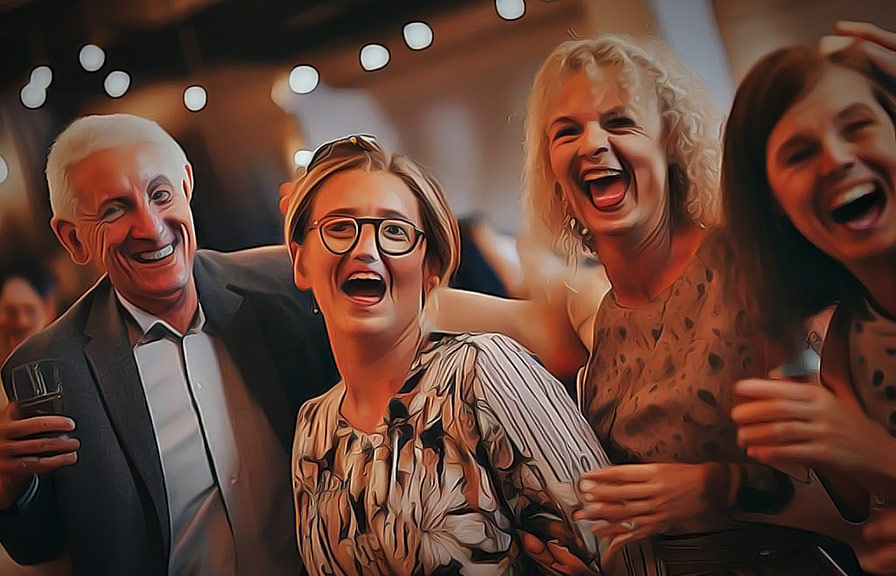Did you know that over 1 trillion photos are taken every year? capturing memories at events is an essential part of our lives, and everyone wants to make sure they have the perfect snapshots to look back on.
Whether you're a professional photographer or just someone who loves snapping away at family gatherings, this guide will help you document event photos using simple equipment.

A fun fact to start your journey
Here's an interesting tidbit about event photography: the first known use of the term "candid photography" dates back to the 1920s when a man named erich salomon started taking unposed pictures at political and social events. he used a small, inconspicuous camera called the leica, which allowed him to capture genuine
Moments without being noticed.
Choosing the right camera for event photography
When it comes to event photography, the camera you choose can make all the difference. here are some key factors to consider when picking a camera:
1. Size and weight: you'll be carrying your camera around for hours, so it's essential to choose one that's comfortable to hold and transport. mirrorless cameras are generally lighter and more compact than dslrs, making them a popular choice for event photography.
2. Image quality: look for a camera with a large sensor size to ensure high image quality in various lighting conditions. full-frame sensors are considered the best, but aps-c sensors offer excellent image quality as well.
3. Autofocus: a fast and accurate autofocus system is crucial for capturing fleeting moments at events. look for a camera with a high number of autofocus points and the ability to track moving subjects.
4. Low light performance: event lighting can be unpredictable, so it's essential to have a camera that performs well in low light. a high iso range and good noise reduction will help you capture sharp images in challenging conditions.
One lesser-known fact about cameras is that some models have a silent shutter mode, which allows you to take photos without making any noise. this can be invaluable at events like weddings or concerts, where you don't want to disturb the atmosphere.
Best lenses for event photography
Choosing the right lens is just as important as selecting the right camera. here are some of the best lenses for event photography:
1. Standard zoom lenses: these versatile lenses typically have a focal length range of 24-70mm or 18-55mm, allowing you to capture both wide-angle and close-up shots. a fast aperture (f/2.8 or lower) is ideal for low light situations and achieving a shallow depth of field.
2. Telephoto zoom lenses: with a focal length range of 70-200mm, these lenses allow you to get close to the action without physically moving closer. this can be particularly useful for events like sports matches or concerts.
Look for a lens with a fast aperture and image stabilization.
3. Prime lenses: prime lenses have a fixed focal length and tend to produce sharper images than zoom lenses. they also generally have wider apertures, making them great for low light situations. a 50mm f/1.8 lens is an affordable and versatile option for event photography.
Capturing the moments at an event
Now that you have the right equipment, it's time to start capturing those unforgettable moments. here are some tips to help you document event photos like a pro:
1. Anticipate moments: keep an eye on the crowd and try to anticipate when something interesting is about to happen. this could be a speech, a toast, or a group of people laughing together. being ready to capture these moments will result in more candid and genuine photos.
2. Use burst mode: burst mode allows you to take several photos in quick succession, increasing your chances of capturing the perfect shot. this is especially useful for fast-paced events like sports games or performances.
3. Change your perspective: don't be afraid to experiment with different angles and perspectives. try shooting from above, below, or from the side to create more dynamic and interesting photos.
4. Pay attention to the background: a cluttered or distracting background can ruin an otherwise great shot. look for clean, simple backgrounds that don't compete with your subject.
5. Tell a story: event photography is all about capturing the atmosphere and emotions of the day. look for moments that help tell the story of the event, and don't forget to include shots of the venue, decorations, and other details.
Conclusion
Documenting event photos with simple equipment is not only possible, but it can also yield stunning results. by choosing the right camera and lenses, and employing the tips mentioned above, you can capture incredible images that will let you and others relive the magic of the event for years
To come.
